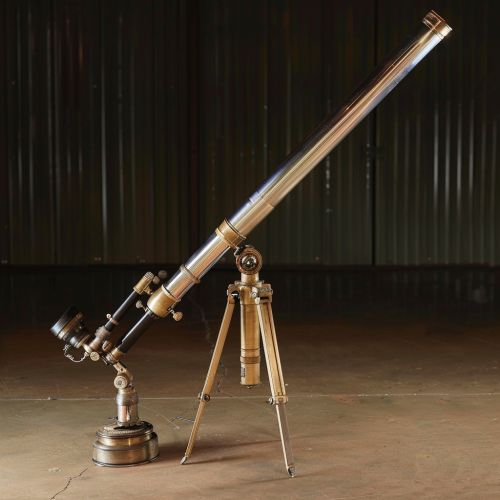Optical telescope
Introduction
An optical telescope is a type of telescope that gathers and magnifies light, primarily from the visible part of the electromagnetic spectrum, to create a magnified image for direct view, or to make a photograph, or to collect data through electronic image sensors.
History
The optical telescope was invented in the early 17th century, during the period known as the Scientific Revolution. The first practical refracting telescopes were developed in the Netherlands around 1608, by an eyeglass maker named Hans Lippershey. The design of these early refracting telescopes consisted of a convex objective lens and a concave eyepiece. Galileo improved on this design and was the first to point a telescope skyward and make astronomical observations.
Types of Optical Telescopes
There are three primary types of optical telescopes – refractors, reflectors, and catadioptric telescopes. Each type has its own advantages and disadvantages and is suited to different types of observing.
Refracting Telescopes
Refracting telescopes use lenses to gather and focus light. They have a long, slender tube with a glass lens at the front, which bends the light and sends it to a focal point at the back of the telescope. The eyepiece lens then magnifies the image.


Reflecting Telescopes
Reflecting telescopes use mirrors instead of lenses. The main (primary) mirror gathers the light, reflecting it back up the tube to a secondary mirror, which then reflects the light out to the side of the telescope where it can be viewed through the eyepiece.
Catadioptric Telescopes
Catadioptric telescopes use a combination of mirrors and lenses to fold the optics and form an image. This results in a longer focal length in a very short tube.
Telescope Mounts
The mount of a telescope is crucial for its proper functioning. There are two main types of mounts – Altazimuth and Equatorial.
Altazimuth Mounts
Altazimuth mounts allow the telescope to move in altitude (up and down), and in azimuth (left to right), similar to a photographic tripod.
Equatorial Mounts
Equatorial mounts align one rotational axis of the mount to the Earth's axis of rotation. This allows the telescope to follow the rotation of the sky with a single motion.
Telescope Optics
The quality of the optics is a critical aspect of a telescope. This includes the quality of the glass, the shape of the lens or mirror, and the coatings put on them.
Observational Astronomy
Optical telescopes are used in observational astronomy, which is a branch of astronomy that involves observing the sky to gather data about celestial objects. Observational astronomy can be done in several ways, including visually, photographically and electronically.
